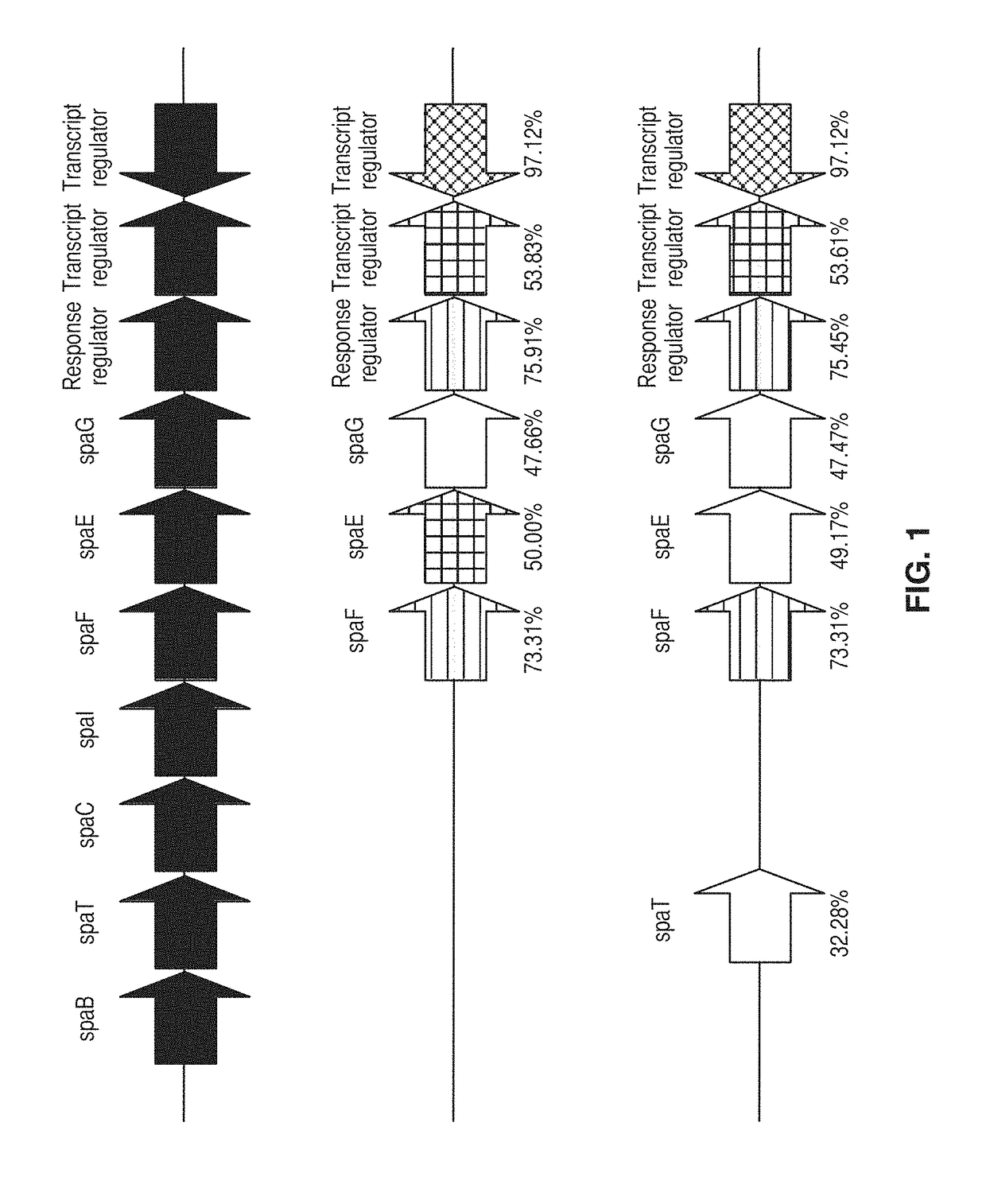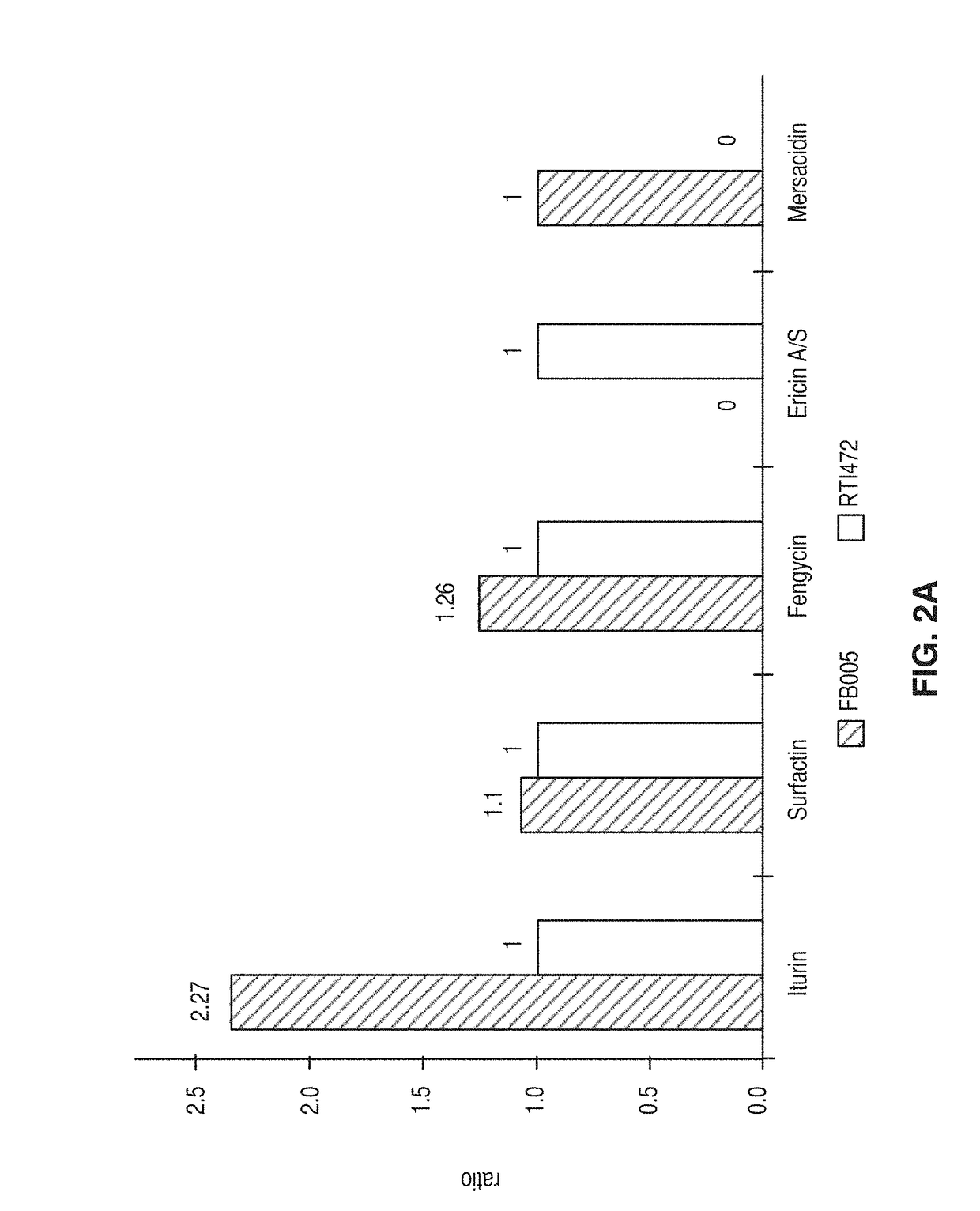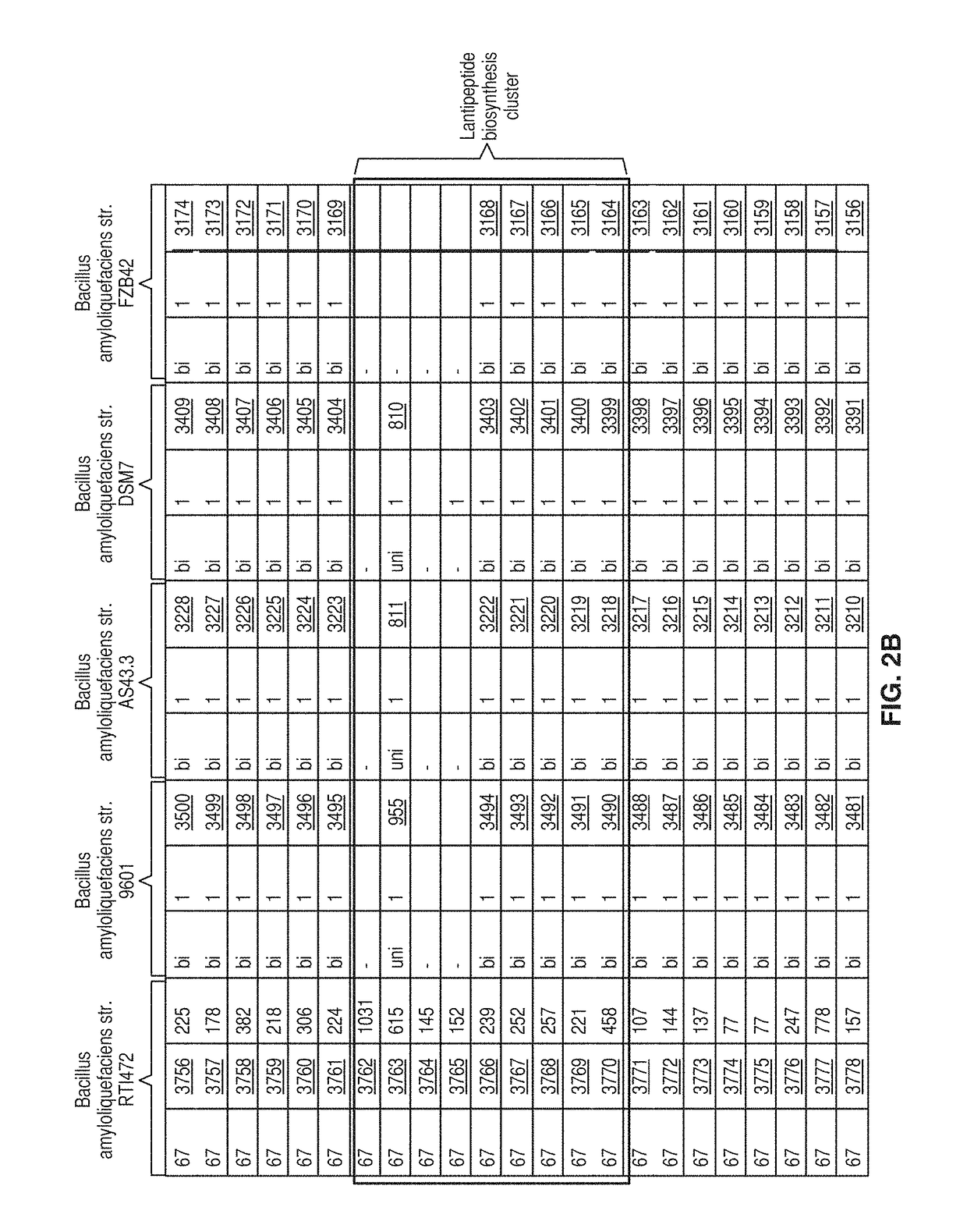Bacillus amyloliquefaciens rti472 compositions and methods of use for benefiting plant growth and treating plant disease
a technology of amyloliquefaciens and compositions, applied in the direction of microorganisms, biocide, bacteria based processes, etc., can solve the problems of reducing the economic benefits of chemical agents, affecting the ripening of fruits, and stimulating plant growth and slowing fruit ripening
- Summary
- Abstract
- Description
- Claims
- Application Information
AI Technical Summary
Benefits of technology
Problems solved by technology
Method used
Image
Examples
example 1
Identification of a Bacterial Isolate as a Bacillus Amyloliquefaciens Through Sequence Analysis
[0149]A plant associated bacterial strain, designated herein as RTI472, was isolated from the root of American ginseng grown in North Carolina. The 16S rRNA and the rpoB genes of the RTI472 strain were sequenced and subsequently compared to other known bacterial strains in the NCBI and RDP databases using BLAST. It was determined that the 16S RNA partial sequence of RTI472 (SEQ ID NO: 1) is identical to the 16S rRNA gene sequence of Bacillus amyloliquefaciens strain NS6 (KF177175), Bacillus amyloliquefaciens strain FZB42 (NR_075005), and Bacillus subtilis subsp. subtilis strain DSM 10 (NR_027552). In addition, it was determined that the rpoB sequence of RTI472 has the highest level of sequence similarity to the known Bacillus amyloliquefaciens AS43.3 strain (i.e., 99% sequence identity); however, there is a 10 nucleotide difference on the DNA level, indicating that RTI472 is a new strain o...
example 2
Unique Genes Related to Lantibiotic Biosynthesis in Bacillus amyloliquefaciens RTI472 Strain
[0150]Further sequence analysis of the genome of the Bacillus amyloliquefaciens RTI472 strain revealed that this strain has unique genes related to lantibiotic biosynthesis, for which homologues are lacking in other closely related Bacillus amyloliquefaciens strains. The lantipeptide biosynthetic cluster was identified in Bacillus amyloliquefaciens RTI472 through computational analysis using the RAST, antiSMASH and BAGEL bioinformatics platforms. The RAST genome annotation identified a region with genes whose protein sequences were putatively involved in lantipeptide biosynthesis. This was confirmed by the antiSMASH data, which identified the same genomic region as harboring a lantipeptide biosynthetic cluster. FIG. 1 shows a schematic diagram of the genomic organization of the lantibiotic biosynthetic cluster found in Bacillus amyloliquefaciens RTI472 as compared to 2 closely related amyloli...
example 3
Anti-Microbial Properties of Bacillus Amyloliquefaciens RTI472 Isolate
[0153]The antagonistic ability of the isolate against major plant pathogens was measured in plate assays. A plate assay for evaluation of antagonism against plant fungal pathogens was performed by growing the bacterial isolate and pathogenic fungi side by side on 869 agar plates at a distance of 4 cm. Plates were incubated at room temperature and checked regularly for up to two weeks for growth behaviors such as growth inhibition, niche occupation, or no effect. In the case of screening for antagonistic properties against bacterial pathogens, the pathogen was first spread as a lawn on 869 agar plates. Subsequently, 20 μl aliquots of a culture of RTI472 were spotted on the plate. Plates were incubated at room temperature and checked regularly for up to two weeks for an inhibition zone in the lawn around the positions were RTI472 had been applied. A summary of the antagonism activity is shown in Table I below.
TABLE ...
PUM
| Property | Measurement | Unit |
|---|---|---|
| molecular weight | aaaaa | aaaaa |
| molecular weight | aaaaa | aaaaa |
| MW | aaaaa | aaaaa |
Abstract
Description
Claims
Application Information
 Login to View More
Login to View More - R&D
- Intellectual Property
- Life Sciences
- Materials
- Tech Scout
- Unparalleled Data Quality
- Higher Quality Content
- 60% Fewer Hallucinations
Browse by: Latest US Patents, China's latest patents, Technical Efficacy Thesaurus, Application Domain, Technology Topic, Popular Technical Reports.
© 2025 PatSnap. All rights reserved.Legal|Privacy policy|Modern Slavery Act Transparency Statement|Sitemap|About US| Contact US: help@patsnap.com



